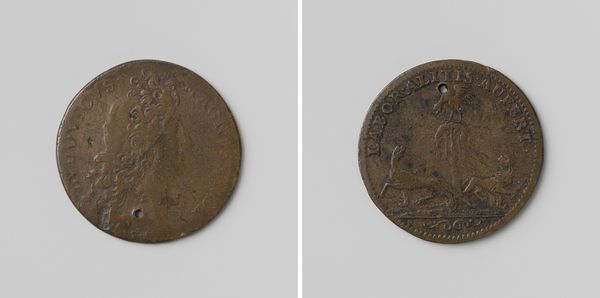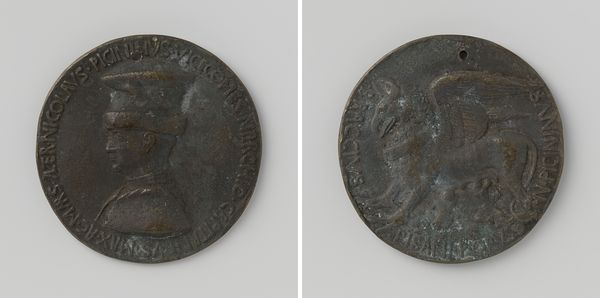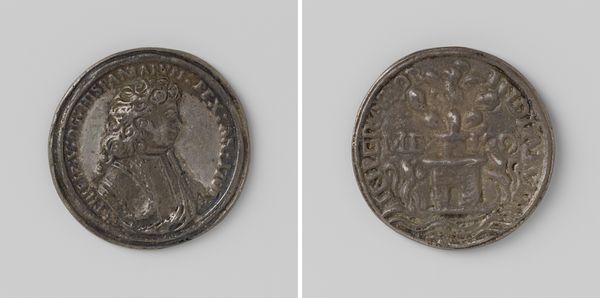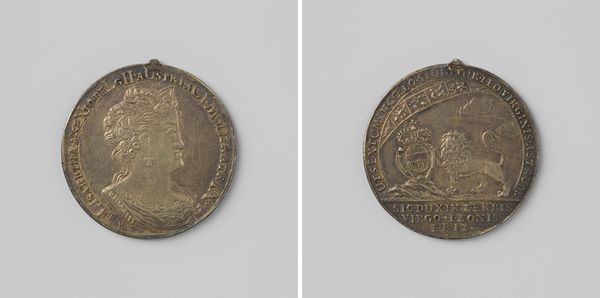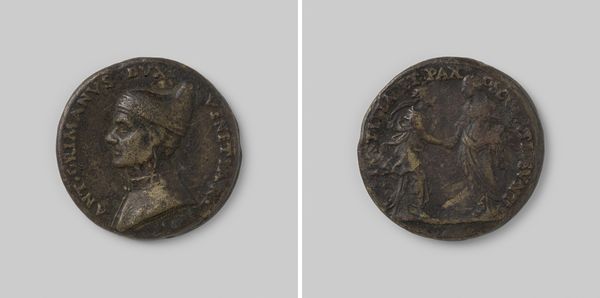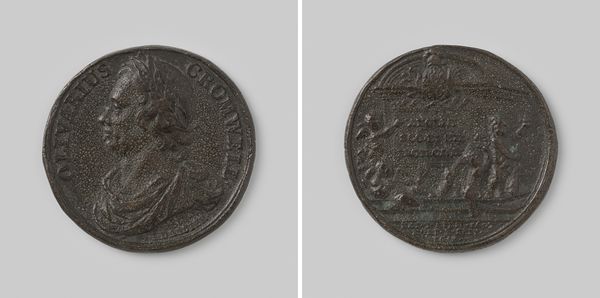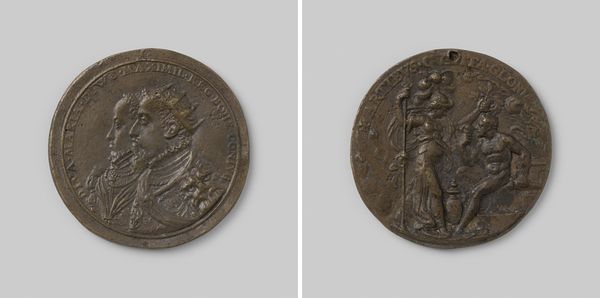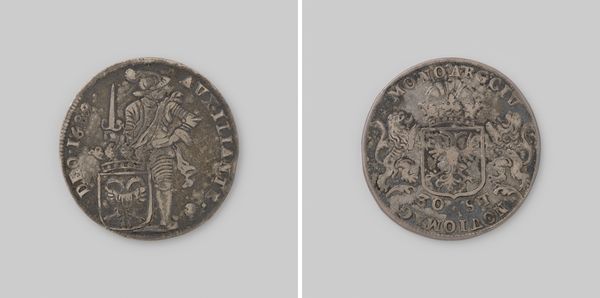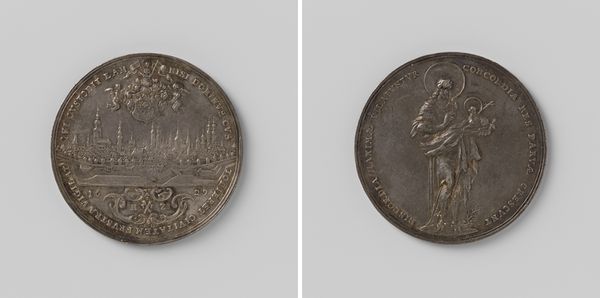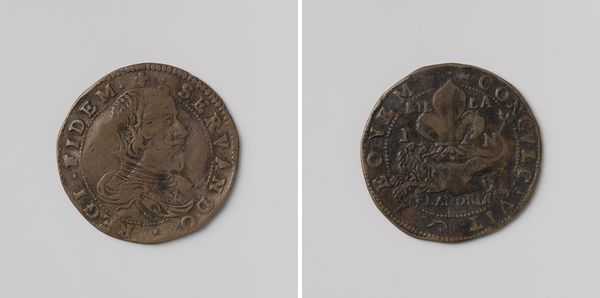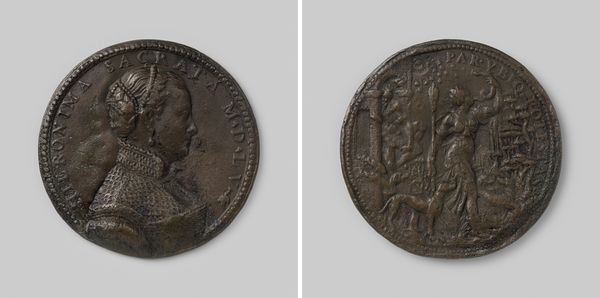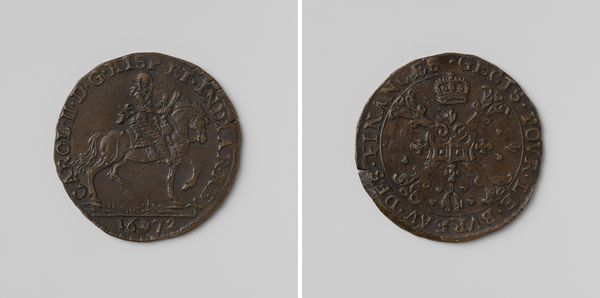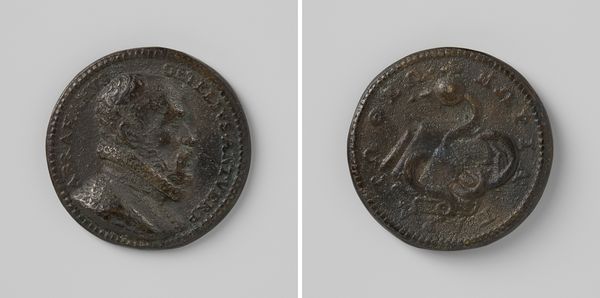
metal, relief, sculpture
#
portrait
#
metal
#
sculpture
#
relief
#
figuration
#
11_renaissance
#
sculpture
Dimensions: diameter 4.8 cm, weight 392 gr
Copyright: Rijks Museum: Open Domain
Curator: Looking at this coin, what captures your immediate attention? Editor: The density, really. It appears to be a small metal disc, but the detail packed into this tiny surface area is intense, feels weighty. Curator: This piece, made around 1530, presents Karel V, hersteller van het christelijk gemenebest—or Charles V, Restorer of the Christian Commonwealth. Note the deliberate choice of metal here. Bronze, I think, it carries so many associations, longevity and value being central. What feelings do you associate with its materiality? Editor: Right, bronze immediately evokes a sense of permanence and history. I wonder about the minting process. How many of these were made, who handled them, and how the economics or propaganda tied into everyday interactions. Bronze casting was a known process at the time so the artist knew the relief could have an almost unlimited amount of production which brings its artistry to another level. Curator: Indeed, these were tools of power. On one side we see Charles in profile, a portrait instantly associating him with Roman emperors. The other side depicts a woman, likely an allegorical figure of peace or justice, alongside architectural motifs that speak to a restored and ordered world. Note also, the strategic use of Latin script; it speaks to the educated elite of the era and further reinforces a sense of classical legitimacy. Editor: It's interesting to consider the haptic experience – the feel of it in one's hand. I would wager that for many who came in contact with the coin the feel of quality added more than the imagery. The small scale contrasts greatly to the conceptual power that those figures embody. This miniaturization makes them relatable on an individual, immediate level while paradoxically speaking about universal dominion. It's quite clever. Curator: Yes! To me, it's more than propaganda. It's a careful distillation of a ruler's vision. We see it reproduced through symbolic figures, Latin language and materials that all converge on themes of restored order and imperial ambition, all meant to cement this vision into the cultural consciousness. It also offers glimpses of the aspirations and anxieties of the time, making it invaluable for understanding that historical narrative. Editor: Looking at this, thinking about what it signifies for a ruler to inscribe his image in this form. We're forced to consider material and representation, power and labor. Its scale allows this narrative to move, physically and symbolically, and enter the cultural discourse on a very intimate level. The genius is, this is how even a brutal emperor ingratiates himself with you. Curator: And to think this small object encapsulates such grand narratives. Remarkable.
Comments
No comments
Be the first to comment and join the conversation on the ultimate creative platform.
